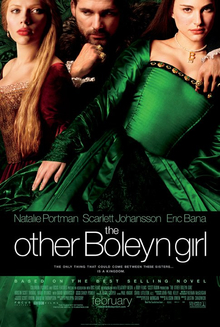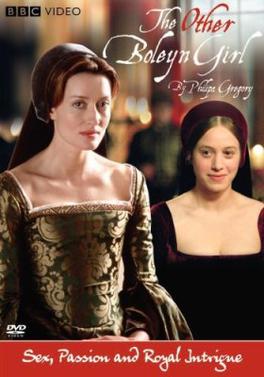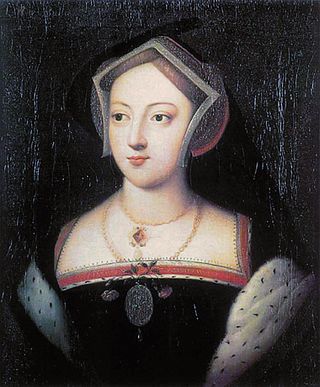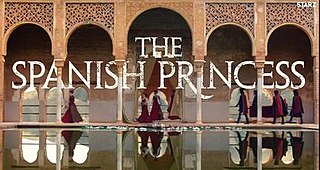
Catherine of Aragon was Queen of England as the first wife of King Henry VIII from their marriage on 11 June 1509 until its annulment on 23 May 1533. She was Princess of Wales while married to Henry's elder brother, Arthur, Prince of Wales, for a short period before his death.

Mary Tudor was an English princess who was briefly Queen of France as the third wife of King Louis XII. Louis was more than 30 years her senior. Mary was the fifth child of Henry VII of England and Elizabeth of York, and the youngest to survive infancy.

Arthur, Prince of Wales, was the eldest son of King Henry VII of England and Elizabeth of York, and an older brother to the future King Henry VIII. He was Duke of Cornwall from birth, and he was created Prince of Wales and Earl of Chester in 1489. As the heir apparent of his father, Arthur was viewed by contemporaries as the great hope of the newly established House of Tudor. His mother was the daughter of the Yorkist king, Edward IV, and his birth cemented the union between the House of Lancaster and the House of York.

Philippa Gregory is an English historical novelist who has been publishing since 1987. The best known of her works is The Other Boleyn Girl (2001), which in 2002 won the Romantic Novel of the Year Award from the Romantic Novelists' Association and has been adapted into two films.
Jane Boleyn, Viscountess Rochford was an English noblewoman. Her husband, George Boleyn, Viscount Rochford, was the brother of Anne Boleyn, the second wife of King Henry VIII, and a cousin to King Henry VIII's fifth wife Catherine Howard, making Jane a cousin-in-law. Jane had been a member of the household of Henry's first wife, Catherine of Aragon. It is possible that she played a role in the verdicts against, and subsequent executions of, her husband and Anne Boleyn. She was later a lady-in-waiting to Henry's third and fourth wives, and then to his fifth wife, Catherine Howard, with whom she was executed.

The Other Boleyn Girl (2001) is a historical novel written by British author Philippa Gregory, loosely based on the life of 16th-century aristocrat Mary Boleyn of whom little is known. Inspired by Mary's life story, Gregory depicts the annulment of one of the most significant royal marriages in English history and conveys the urgency of the need for a male heir to the throne. Much of the history is highly distorted in her account.

In common parlance, the wives of Henry VIII were the six Queens consort of King Henry VIII of England between 1509 and his death in 1547. In legal terms, Henry had only three wives, because three of his marriages were annulled by the Church of England. He was never granted an annulment by the Pope as he desired, for Catherine of Aragon, his first wife. Annulments declare that a true marriage never took place, unlike a divorce, in which a married couple end their union. Along with his six wives, Henry took several mistresses.

The Other Boleyn Girl is a 2008 historical romantic drama film directed by Justin Chadwick. The screenplay by Peter Morgan was adapted from Philippa Gregory’s 2001 novel of the same name. It is a fictionalised account of the lives of 16th-century English aristocrats Mary Boleyn, mistress of King Henry VIII, and her sister, Anne, who became the monarch's ill-fated second wife.

The Boleyn Inheritance is a novel by British author Philippa Gregory which was first published in 2006. It is a direct sequel to her previous novel The Other Boleyn Girl, and one of the additions to her six-part series on the Tudor royals. The novel is told through the first-person narratives of – Anne of Cleves, Katherine Howard, and Jane Boleyn, who was mentioned in The Other Boleyn Girl. It covers a period from 1539 until 1542 and chronicles the fourth and fifth marriages of King Henry VIII of England.

Henry VIII is a two-part British television serial produced principally by Granada Television for ITV from 12 to 19 October 2003. It chronicles the life of Henry VIII of England from the disintegration of his first marriage to an aging Spanish princess until his death following a stroke in 1547, by which time he had married for the sixth time. Additional production funding was provided by WGBH Boston, Powercorp and the Australian Broadcasting Corporation.

Doomed Queen Anne is a young-adult historical novel about Anne Boleyn by Carolyn Meyer. It is the third book in the Young Royals series. Other books are Mary, Bloody Mary, Beware, Princess Elizabeth and Patience, Princess Catherine. The book was originally published in the U.S. in 2002 by Harcourt/Gulliver Books.
Young Royals is a series of novels for children by Carolyn Meyer based on the early lives of multiple royalties such as English and French royalty. Books in the series are mostly about the English Tudors, such as: Mary, Bloody Mary (1999); Beware, Princess Elizabeth (2001); Doomed Queen Anne (2002); and Patience, Princess Catherine (2004). The French books in the series are Duchessina (2007), about the life of Catherine de' Medici, and The Bad Queen: Rules and Instructions for Marie-Antoinette (2010). The most recent titles in the series are: The Wild Queen: The Days and Nights of Mary, Queen of Scots (2012); Victoria Rebels (2013), about Queen Victoria of the British Empire; and Anastasia and Her Sisters (2013), about the daughters of Tsar Nicholas of Russia, specifically Anastasia.
Alison Weir is a British author and public historian. She primarily writes about the history of English royal women and families, in the form of biographies that explore their historical setting. She has also written numerous works of historical fiction.

The Other Boleyn Girl is a 2003 BBC television film directed and written by Philippa Lowthorpe, adapted from Philippa Gregory's 2001 novel of the same name. It centres around courtier Mary Boleyn and her sister Anne Boleyn, second wife of Henry VIII, King of England, and their competition for his affections.

Mary Boleyn, also known as Lady Mary, was the sister of English queen consort Anne Boleyn, whose family enjoyed considerable influence during the reign of King Henry VIII.

The mistresses of Henry VIII included many notable women between 1509 and 1536. They have been the subject of biographies, novels and films.
Maureen Peters was a historical novelist, under her own name and pseudonyms such as Veronica Black, Catherine Darby, Belinda Gray, Levanah Lloyd, Judith Rothman, Elizabeth Law and Sharon Whitby.

The King's Curse is a 2014 historical novel by Philippa Gregory, part of her series The Cousins' War. A direct sequel to The White Princess, it follows the adult life of Margaret Pole, Countess of Salisbury, the daughter of George Plantagenet, 1st Duke of Clarence and Isabel Neville.

The Spanish Princess is a historical drama television limited series developed by Emma Frost and Matthew Graham for Starz. Based on the novels The Constant Princess (2005) and The King's Curse (2014) by Philippa Gregory, it is a sequel to the miniseries The White Queen and The White Princess. It centres around Catherine of Aragon, the eponymous Spanish princess who became Queen of England as the first wife of King Henry VIII.

Catherine of Aragon was Queen of England from June 1509 until May 1533 as the first wife of King Henry VIII. She has been portrayed in film, television, plays, novels, songs, poems, and other creative forms many times, and as a result, she has stayed very much in popular memory.















